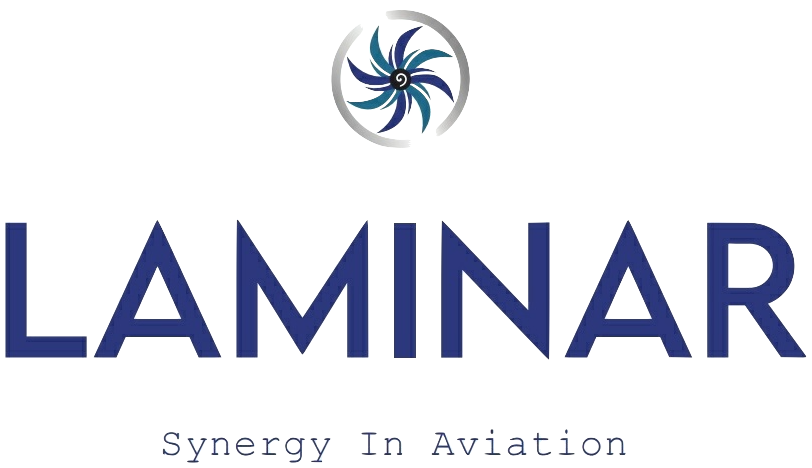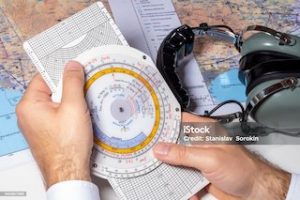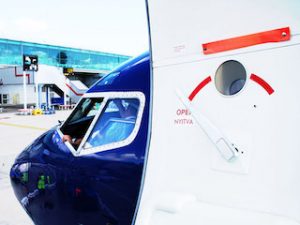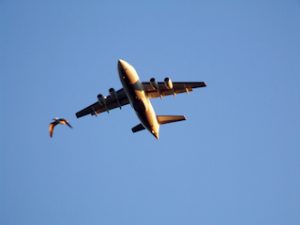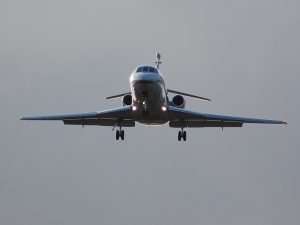Optimizing Flight Paths for Efficient Operations: Insights from Airline Pilot Standards (APS) Courses
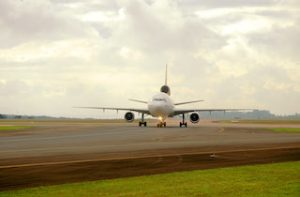 In the world of aviation, optimizing flight paths is a critical component of achieving operational efficiency and safety. Airline Pilot Standards (APS) courses provide pilots with the essential skills and knowledge required to plan and execute optimal flight paths, ensuring reduced fuel consumption, minimized environmental impact, and enhanced passenger satisfaction. This article delves into the comprehensive training provided by APS courses, highlighting the strategies and tools pilots use to optimize flight paths for more efficient operations.
In the world of aviation, optimizing flight paths is a critical component of achieving operational efficiency and safety. Airline Pilot Standards (APS) courses provide pilots with the essential skills and knowledge required to plan and execute optimal flight paths, ensuring reduced fuel consumption, minimized environmental impact, and enhanced passenger satisfaction. This article delves into the comprehensive training provided by APS courses, highlighting the strategies and tools pilots use to optimize flight paths for more efficient operations.
Importance of flight path optimisation
Optimizing flight paths is a multifaceted process that involves precise planning and real-time decision-making. It directly impacts several key areas:
Fuel efficiency
Fuel costs constitute a significant portion of an airline’s operating expenses. By optimizing flight paths, pilots can reduce fuel consumption, leading to substantial cost savings and a reduction in the environmental footprint.
Operational efficiency
Efficient flight paths help maintain schedules, minimize delays, and improve overall operational performance. This is crucial for maintaining a competitive edge in the aviation industry.
Safety
Optimal flight paths also enhance safety by avoiding hazardous weather, turbulent zones, and congested airspace. This proactive approach minimises risks and ensures a smoother flight experience for passengers.
Components of flight path optimisation training in APS Courses
APS courses provide pilots with a comprehensive understanding of flight path optimization through a structured curriculum that covers various critical aspects:
1) Pre-flight planning
Pre-flight planning is the foundation of flight path optimization. APS courses teach pilots to use advanced flight planning software and tools to analyse and select the most efficient routes based on several factors:
-
- Weather forecasting: Understanding and interpreting weather patterns is crucial. Pilots learn to use meteorological data to avoid adverse weather conditions, which can impact fuel efficiency and passenger comfort.
- Airspace structure: Knowledge of airspace regulations and restrictions is essential. Pilots are trained to navigate controlled and uncontrolled airspace efficiently, avoiding congested areas and adhering to air traffic control (ATC) instructions.
- Route analysis: Pilots evaluate different routes to identify the most fuel-efficient and time-saving options. This involves analysing waypoints, airways, and direct routing opportunities.
- Alternate airports: Planning for alternate airports in case of emergencies or unexpected conditions is a critical component of pre-flight planning. Pilots learn to select optimal alternates based on proximity, facilities, and weather conditions.
2) In-flight adjustments
Flight path optimization does not end with pre-flight planning. APS courses emphasise the importance of in-flight adjustments to account for dynamic conditions:
-
- Real-time weather updates: Pilots receive continuous weather updates during the flight. APS courses train them to interpret this data and make necessary route adjustments to avoid turbulence, storms, and other adverse conditions.
- Air Traffic Control (ATC) coordination: Effective communication with ATC is essential for optimal flight path management. Pilots learn to request direct routes, altitude changes, and deviations to maintain efficiency while ensuring compliance with ATC directives.
- Fuel management: Real-time monitoring of fuel consumption is critical. Pilots are trained to adjust throttle settings, altitude, and speed to optimise fuel efficiency throughout the flight.
- Performance monitoring: Continuous monitoring of the aircraft’s performance allows pilots to make informed decisions about route adjustments. APS courses teach pilots to use onboard systems to track key performance indicators and respond proactively to any deviations from the planned path.
Advanced tools and technologies for flight path optimisation
APS courses equip pilots with the knowledge and skills to utilise advanced tools and technologies that play a pivotal role in flight path optimisation:
1) Flight Management Systems (FMS)
Modern aircraft are equipped with sophisticated Flight Management Systems (FMS) that integrate navigation, performance, and fuel data. APS courses train pilots to use FMS effectively for planning and executing optimal flight paths. Key features include:
-
- Route planning: FMS allows for precise route planning, considering waypoints, airways, and direct routes. Pilots can input multiple routes and select the most efficient option.
- Fuel predictions: FMS provides real-time fuel predictions based on current conditions, helping pilots make informed decisions about adjustments to optimise fuel use.
- Performance calculations: FMS performs continuous performance calculations, enabling pilots to maintain optimal altitude, speed, and power settings for efficiency.
2) Weather radar and predictive tools
Weather radar and predictive tools are essential for avoiding adverse weather conditions. APS courses teach pilots to interpret radar displays and use predictive tools to anticipate weather changes and adjust flight paths accordingly.
3) Traffic Collision Avoidance Systems (TCAS)
Traffic Collision Avoidance Systems (TCAS) enhance situational awareness in congested airspace. APS courses cover the operation of TCAS, enabling pilots to make informed decisions about route adjustments to maintain safe distances from other aircraft.
Human factors in flight path optimisation
Human factors play a significant role in flight path optimization. APS courses address these factors to ensure that pilots are well-prepared to manage the complexities of flight operations:
Decision-making skills
Effective decision-making is crucial for optimizing flight paths. APS courses teach structured decision-making models, such as the OODA loop (Observe, Orient, Decide, Act) and the DECIDE model (Detect, Estimate, Choose, Identify, Do, Evaluate). These models provide pilots with systematic approaches to evaluate options and make informed decisions under pressure.
Stress and workload management
High stress and workload can impair decision-making and situational awareness. APS courses include training on stress management techniques, such as controlled breathing and workload prioritisation, to help pilots maintain composure and focus during critical phases of flight.
Communication and teamwork
Effective communication and teamwork are essential for flight path optimization in a multi-crew environment. APS courses emphasise Crew Resource Management (CRM) principles, teaching pilots to communicate clearly, share information, and collaborate effectively to enhance situational awareness and decision-making.
Regulatory compliance and best practices
Flight path optimisation training in APS courses aligns with regulatory standards and best practices established by international aviation organisations and regulatory authorities:
International Civil Aviation Organization (ICAO) standards
The International Civil Aviation Organization (ICAO) sets global standards for flight path optimization and related training. APS courses ensure that pilots are familiar with ICAO guidelines and understand their role in maintaining compliance with these standards.
Federal Aviation Administration (FAA) regulations
In the United States, the Federal Aviation Administration (FAA) mandates specific training requirements for flight path optimization. APS courses include training on FAA regulations, ensuring that pilots meet the necessary standards and are prepared to apply their skills in accordance with FAA guidelines.
Industry best practices
In addition to regulatory standards, APS courses incorporate industry best practices for flight path optimization. These practices are developed through collaboration among airlines, aviation organisations, and safety experts, ensuring that pilots receive training that reflects current industry standards and advancements.
Role of continuous improvement and recurrent training
Flight path optimisation is an ongoing process that requires continuous improvement and recurrent training to ensure that pilots remain proficient and up-to-date with the latest techniques and standards:
Recurrent training programs
Recurrent training programs are essential for keeping pilots’ skills sharp and ensuring that they remain proficient in flight path optimization. APS courses include recurrent training modules, where pilots regularly practice flight planning, in-flight adjustments, and real-time decision-making.
Feedback and evaluation
Continuous improvement is a key aspect of flight path optimization training. Pilots participate in regular evaluations and receive feedback on their performance. This feedback helps identify areas for improvement and ensures that pilots are always working towards enhancing their skills.
Staying current with technological advancements
The field of aviation is constantly evolving, with new technologies and procedures being developed to enhance safety and efficiency. APS courses ensure that pilots stay current with these advancements, providing training on the latest tools and techniques for flight path optimisation.
Operational efficient through flight planning
Optimizing flight paths is a critical component of achieving operational efficiency and safety in aviation. Airline Pilot Standards (APS) courses provide pilots with the essential skills and knowledge required to plan and execute optimal flight paths, ensuring reduced fuel consumption, minimized environmental impact, and enhanced passenger satisfaction.
Through comprehensive training on pre-flight planning, in-flight adjustments, advanced tools and technologies, and human factors, APS courses equip pilots with the expertise needed to navigate the complexities of modern flight operations. By aligning with regulatory standards and industry best practices, and emphasising continuous improvement and recurrent training, APS courses ensure that pilots are well-prepared to optimise flight paths and contribute to a safer, more efficient aviation industry.
